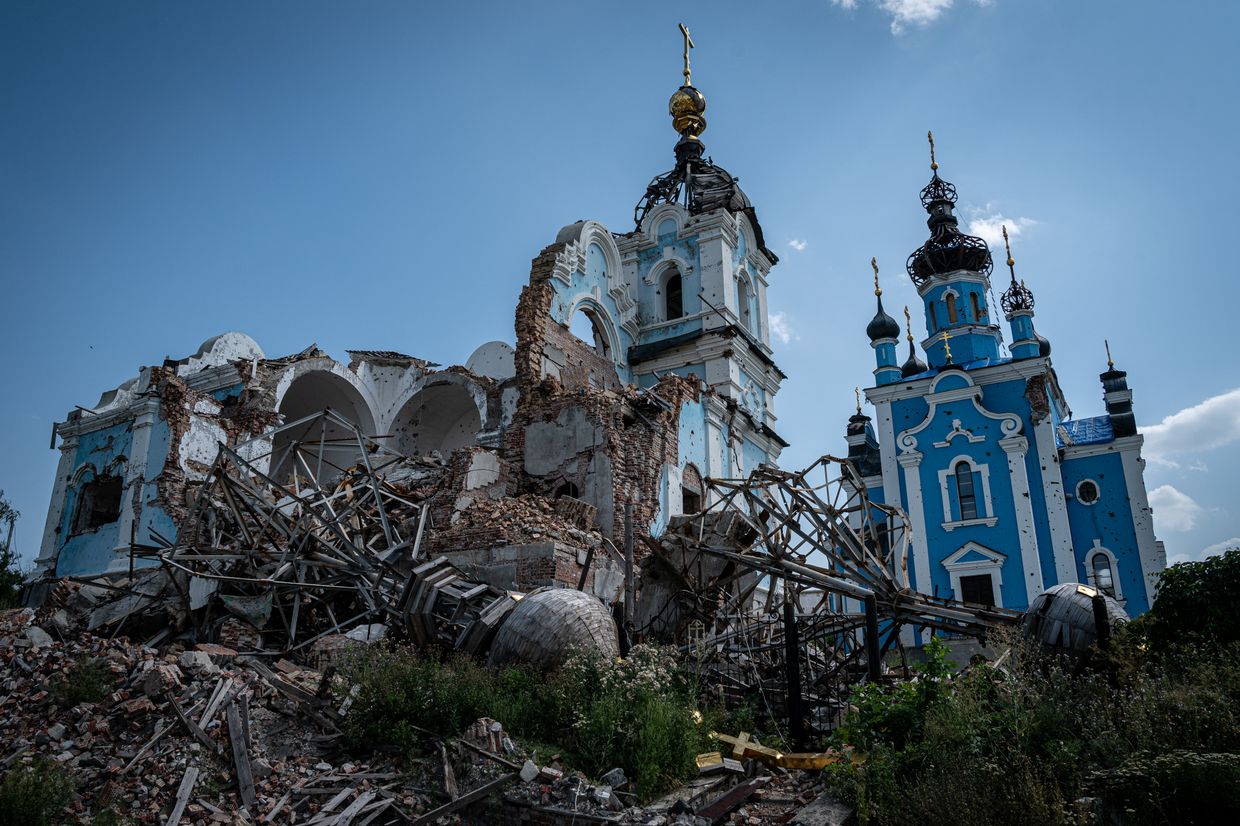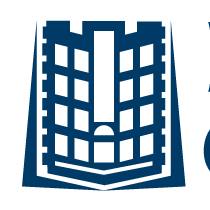Editor's Note: The Kyiv Independent is exclusively re-publishing an interview with Ihor Poshyvailo prepared by the Forum for Ukrainian Studies, a research publication for experts, practitioners, and academics to discuss, explore, reflect upon, develop, and transform international understanding of contemporary affairs in Ukraine. This platform is run by the Canadian Institute of Ukrainian Studies (CIUS) of the University of Alberta (Edmonton, Canada).
Ihor Poshyvailo is the director of the National Museum of Revolution of Dignity (Maidan Museum) and curator of the “Destroyed Temples of Ukraine” exhibit.
CIUS: You are the director of the National Museum of the Revolution of Dignity, or Maidan Museum, which has done groundbreaking work on contemporary history and new commemorative practices in Ukraine. How do you see the Maidan Museum’s role in the present war?
hor Poshyvailo: The Maidan Museum was established by the EuroMaidan Revolution. The idea of the Maidan Museum was developed at the very heart of the original protest. A small group of activists, including from the grassroots Maidan Self-Defence organization, as well as some representatives of NGOs and Kyiv museums, envisioned an institution that documented the history of this important uprising. It was unclear how events would transpire at that time because it was January 2014, in the middle of the ninety-four-day protest. Still, it was clear to us that we wanted to speak about a future museum—the Maidan Museum, which we were calling the Museum of Freedom (Muzei svobody) at that time. We wanted to address not only the details of the historical event or focus only on the past but also to focus mostly on the future, speaking about human rights and the universal values that brought Ukrainians to the protests. Therefore, the Maidan Museum is formally a historical museum, but in reality it is a kind of museum of memory, human rights, and values.
In connection to the present war, it’s quite clear to us, and all Ukrainians, that the Russo-Ukrainian War is a continuation of Ukraine’s fight for freedom, not only in our contemporary history but across a centuries-long period. One hundred years ago we had the Ukrainian Revolution of 1917–21, and then we had the so-called vyzvol’ni zmahannia [liberation struggle] in the middle of the Second World War. In Soviet times, we had the dissident movement before Ukraine re-established its independence in 1991. We had the students’ Granite Revolution and then the Orange Revolution and the Euromaidan Revolution of Dignity. So, it is one process of Ukrainians fighting for their historical memory and cultural identity, for their future and, of course, for human rights and individual freedoms.
In this connection, the Maidan Museum’s role is clearly defined, because our main declared mission was to document the different manifestations and expressions of freedom, human rights, and the struggle for and defence of Ukraine’s independence. For us, this war is a continuation of the Maidan—and not in a symbolic way, because the war started on February 20, the same day when the largest number of unarmed protesters (later named the Heavenly Hundred heroes) was brutally killed by riot police in Kyiv. Recently, at a press conference, Ukraine’s Office of the General Prosecutor revealed the conclusions of its investigation, confirming the Russian Federation’s presence during the events of the Euromaidan and how Russian secret services influenced the Ukrainian government and president’s actions and responses to the protests. We see Russia’s aggression against Ukraine as a single coordinated process, and we also understand that the Maidan protests destroyed Moscow’s plans to seize Ukraine, stealthily and covertly, through political collaborators at the highest level of government, using hybrid technologies.
When the war started in February 2014, the ongoing Maidan was transformed into a powerful volunteer movement supporting the Ukrainian Armed Forces. Many Maidan protesters, cultural activists, lawyers, scholars, journalists, artists, and medical personnel went to Eastern Ukraine as soldiers and volunteers. In this way, many protesters exchanged their wooden shields and makeshift ammunition for bulletproof body armor and firearms and set out to defend their country. It was quite natural for us to document this process, and in particular the role of the Maidan Revolution’s participants and civil society’s resistance to the occupiers.
When the large-scale war broke out on February 24, 2022, the Maidan Museum initiated and co-founded the Heritage Emergency Response Initiative. Within this initiative we not only launched cultural emergency rescue operations but also expanded our museum work. For example, we collected oral histories on the ground, not only about the events at Maidan but also accounts of cultural and civil resistance to the military aggression. Today, we continue to collect artefacts from the war and document the war’s impact on heritage and crimes against culture.
CIUS: You touched on the importance of memory. Cultural memory operates within a spectrum, tying the local to the regional, national, and even transnational. Could you comment on the interaction between these levels of memory in the current context of the war and how they are changing in response to the war?
Poshyvailo: In Ukraine there was a big problem with cultural memory, which was connected to our historical memory, because during the times of Russian Imperial and Soviet domination, and even in the post-Soviet period, many Ukrainians had yet to rediscover their national identity and cultural historical memory. However, in 1991 quite powerful processes were set into motion. A lot of Ukrainians, especially in the eastern and southern regions, recovered their history and cultural identity. It was quite clear that this was a revelation for many Ukrainians and, especially after Maidan, it was a fantastic moment, a kind of catharsis for many people. Maidan also launched the process of decommunization, and Russia’s large-scale aggression resulted in the first stage of Ukraine’s decolonization policy.
Interactions between different levels of memory—regional, national, and transnational— are quite active at the moment. For example, special institutions that had been created in Ukraine’s capital, such as the Ukrainian Institute of National Remembrance, were transformed after Maidan from a research institution into a governmental institution. The Institute started to establish an infrastructure of memory quite effectively and actively.
Of course, there were various challenges at the regional level due to a lack of educational capacities. There was a large demand, for example, to change the former Soviet or post-Soviet exhibits in small regional town and village museums, where narratives from the Soviet Union still dominated the interpretation of Lenin’s revolution, the Second World War, and Ukrainian-Russian relations in general. Many falsifications and myths about Soviet history in particular were very prominent. In this connection, efforts were launched from the national level. Simultaneously, after the Maidan Revolution many reforms were launched. One of these reforms was administrative decentralization. This meant that the center in Kyiv was not able to exert undue influence on the regions in this regard. It took a lot of time, but the war helped to accelerate the process by which local communities became interested in rediscovering their previously imprisoned memory and the hidden history of their towns and cities, artistic traditions, cultural expressions, rites and customs, and local figures and heroes.
About the transnational level, Ukraine had a great need for methodologies of interpretation and presentation related to traumatic or controversial histories. For example, the Maidan Museum became one of the first Ukrainian members of the International Coalition of Sites of Conscience, which is headquartered in New York. Many museums and institutions in Ukraine that are connected to conflicted or traumatic histories also became members of the Platform of European Memory and Conscience. We needed to learn how to transition our cultural institutions from places that served ideology, as in Soviet times, to places of dialogue whose role is not only to justify the government, especially in traumatic events like wars and social conflicts, but to create a kind of open and dynamic platform for dialogue and peacebuilding—for understanding, healing trauma, and consolidating the nation. This interaction is very active and since 2014 has been strongly supported at the national, regional, and local levels.
In the current context, we also see a great process of cultural memory transformation, even in the occupied territories, because this war is a big shock and stress to Ukrainian society. A lot of people keep asking themselves why this war happened. Why did the Russians do this to us? Before the war, even Putin declared that Ukrainians and Russians are brothers, but on the other hand he said that Ukraine and Ukrainian people do not exist at all as an independent nation. There are large contradictions within Kremlin propaganda, and many people who were under the influence of Russian propaganda for a long time have awakened and are quite open to learning and rediscovering their national and cultural identity in this crisis situation.
For example, we recently hosted a book presentation by the outstanding Ukrainian historian Oleksandr Zinchenko, the author of a book whose translated title is How Ukrainians Destroyed the Empire of Evil. He said that when President Yushchenko recognized Stepan Bandera as a Hero of Ukraine in 2010, the majority of Ukrainians did not support this action because Bandera was still seen quite negatively due to the influence of Soviet propaganda. Five years after the war started in 2014, around fifteen percent of people supported Stepan Bandera as an important Ukrainian historical figure. Zinchenko provides statistics from more recent sociological surveys that show support for Stepan Bandera has grown since the large-scale invasion in 2022 to more than eighty percent. It is the same situation with recognition of the Holodomor as a genocide against Ukrainians. These are very good illustrations of how the crisis situation has influenced and changed people’s thinking about history.
Read the full interview here.













